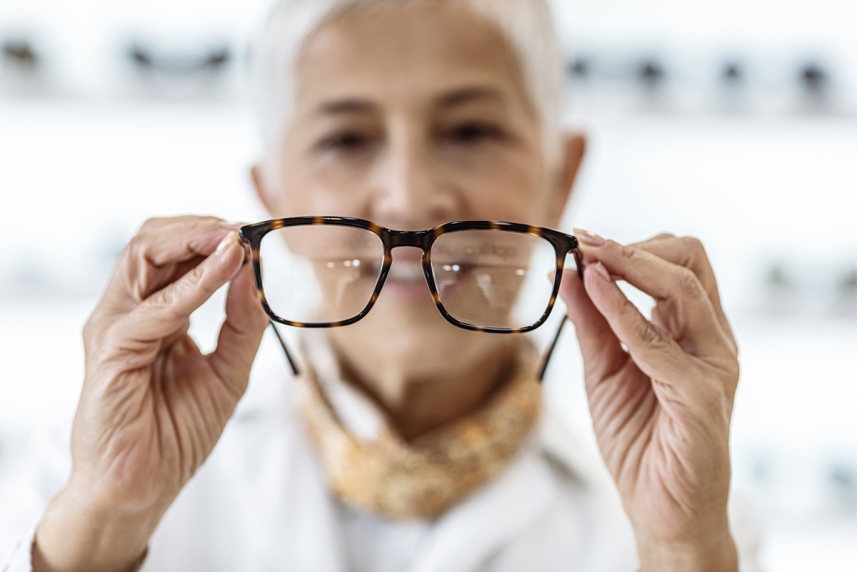Vision plan FAQ
Have questions about coverage for eye exams and eyewear? From how to choose a vision plan to the cost of lens fittings, here are the answers to some of the most common questions.

What’s in a vision plan?
Most vision insurance plans cover annual vision exams, eyeglass frames, and lenses for eyeglasses or contacts. They may also cover corrective, routine and preventive care. Issues such as infections, injuries or eye diseases usually fall under health insurance plans, not vision plans.
Generally, insurance companies offer two options for vision services:
- Benefits that provide access to a capped dollar allowance for services and products after applicable copay or coinsurance.
- Plans that provide a predetermined discount, such as 20% on qualified services
When comparing vision plans, it’s important to review the provider directory. It can help locate preferred providers or care that is close to home.
As with any insurance plan, think about current and future eye care needs. For those who wear glasses or contacts, for example, it’s good to understand what the plan will pay and what out-of-pocket costs could be.
Need new glasses? In 3 easy steps, you could have a new pair on the way. Check your vision coverage, select your favorite frames, then check out. Done!
What’s the difference between a vision screening and a comprehensive eye exam?
A vision screening checks visual acuity. That’s how well a person can see objects at different distances. It shows whether there is a need for glasses or contacts.
A comprehensive eye exam looks at every aspect of eye health. In addition to doing a visual acuity test, eye doctors may check:1
- peripheral vision
- eye muscle function
- pupil response
- pressure inside the eye (an important indicator of glaucoma)
- retinal health
Individuals may be responsible for a copay when getting a comprehensive eye exam from an in-network provider.
How does someone find an optometrist or ophthalmologist in the network?
Visit myuhcvision.com to search for network providers. UnitedHealthcare Vision has one of the nation’s largest networks of optical providers, with more than 175,000 access points.
It’s easy to find the right optometrist or ophthalmologist: simply visit www.myuhcvision.com, choose the appropriate network and then enter a ZIP code. To fine-tune the results, click on “Advanced Search” to filter the results by everything from provider gender to office language to practices that serve people with disabilities or special needs.
What’s the difference between an optometrist and an ophthalmologist?
Optometrists offer primary vision care. They can perform eye exams and vision tests, diagnose and manage vision changes, detect certain eye abnormalities and prescribe medications for certain eye diseases. An optometrist isn’t a medical doctor. An optometrist receives a doctor of optometry (OD) degree.
Ophthalmologists are medical doctors (MD) who specialize in eye and vision care. They’re licensed to practice medicine and surgery. They can prescribe and fit eyeglasses and contact lenses to correct vision problems too. But an ophthalmologist also diagnoses and treats all eye diseases and performs eye surgery, such as repairing a detached retina.2
Most of the time, an optometrist is the provider an individual would see every year for typical eye care and updates for glasses or contacts. More serious eye conditions may require a referral to an ophthalmologist.
What’s an eyeglass frame allowance?
UnitedHealthcare Vision plans will pay up to a specified amount for new eyeglass frames — that’s known as an allowance. Depending on the vision plan, members can get new frames once every 12 or 24 months, with an allowance towards those new frames.
For example, if a member’s allowance is $130 and they choose frames that cost $130 or less, that member does not owe any additional out of pocket costs. If the frames cost more than the allowance amount, members simply pay the difference. also get a discount on any cost over the allowance amount.
What are eyeglass lens enhancements?
Standard lenses are included at no cost as part of certain UnitedHealthcare Vision plans. But members may choose options called lens enhancements. Popular lens options include:
An improvement over lined bifocals and trifocals, these lenses gradually transition between corrective zones, which mimics how the eye naturally works. Options range from Tier 1, the most cost-conscious, to Tier 5, which have a more natural feel.
These lenses automatically darken when you go outside and lighten when you go inside, based on exposure to UV radiation.
High-index lenses
These lenses are thinner and lighter than ordinary lenses. This is helpful if you have high correction needs and don’t want to wear thick lenses.
These are lighter and more shatter-resistant than ordinary lenses. They also block UV rays.
UV coating
This reduces the glare from light bouncing off surfaces such as water and snow.
This option reduces the amount of internal and external reflection on a lens.
Popular lens options, like UV protection or anti-reflective coating, are available at price-protected amounts. Plus, standard scratch coating and polycarbonate lenses for dependent children are available at no cost if covered by their vision plan.
What’s the allowance for contacts?
That varies based on plan type. Some plans allow members to choose a brand that’s included in the formulary. So a member would only be responsible for the copay (alternatively, the member may receive an allowance towards non-formulary brands). Other plans offer an allowance towards any brand. Depending on the chosen plan, members could receive up to a $200 annual allowance for contacts.
Is a contact lens fitting covered?
A fitting is when a provider determines what strength and type of contact lenses are needed. Members may have coverage for a fitting and follow-up visits depending on plan design and lens choice.
What if I wear both glasses and contacts?
Vision plans typically only cover either glasses or contacts per calendar year. But at select provider locations, members may receive a 20% discount on additional pairs of glasses (including prescription sunglasses) and 10% off contact lenses.
What is the claims submission process?
Members pay their providers the amount owed at the time of service, usually including a copay. Health savings accounts (HSA) and flexible spending accounts (FSA) can also be used to purchase glasses, contacts and supplies such as cleaning spray. Save receipts or use the debit card that comes with the HSA/FSA account to get reimbursed for qualified out-of-pocket vision expenses.
You can find your favorite contact brands, including Acuvue, Biotrue and Air Optix, at UnitedHealthcare Vision. Stock up on contact lenses now.
Sources:
- Comprehensive eye exams American Optometric Association
- Difference between an Ophthalmologist, Optometrist and Optician American Association for Pediatric Ophthalmology and Strabismus, last updated February 2019.


